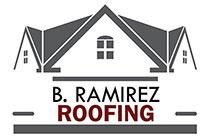Before you can fix a roof leak, you need to find out where it’s coming from. But, it’s not always as straightforward as you may want it to be. If water is dripping from your ceiling, it might be coming from directly above. But, it can also be coming from several feet away or further. As water moves through your roof and the layers of your attic, it may not flow straight down. It will usually create a puddle on your attic floor until it finds a way to escape (such as a vent or light fixture). It will come out wherever it can, and it may not be directly beneath where it’s dripping through the roof.
False Roof Leaks
The presence of water and condensation isn’t always a sign of a roof leak. Roofs that aren’t getting the right amount of ventilation will often have moisture issues, and they can cause the following problems:
- Mold
- Mildew
- Staining
- Water Damage
A plumbing problem can sometimes affect the ceiling and may look like a roof leak. Even if you find signs of water damage, it doesn’t always mean it’s because of a leaky roof. A professional can help you to determine if the condensation and moisture is being caused by a roof leak.
Before You Look for a Roof Leak
If you have a roof leak, your first priority is to limit the amount of water flow. Place a bucket underneath the water to catch it, so you can prevent further damage. If the constant dripping of the water is annoying, you can put a small wooden board inside the bucket and put it in a place that will allow the water to hit the wood and roll off into the bucket. Water makes less noise when it hits wood.
You also want to remove anything that can get damaged by water or ceiling collapse, including the following:
- Rugs
- Furniture
- Personal Items
Keep them out of the room until the roofer can fix the leak. Some places recommend that you puncture the ceiling where the drip is coming from to keep any water from building up, but you shouldn’t do this without speaking to a professional. There’s no way to know how much water is up there, what you could damage by punching a hole in the ceiling, or how much of it will come down if you damage it. This can be especially true if the leak is severe.
Finding a Roof Leak in Your Attic
The first thing you need to determine is whether you can access your attic. If you can, take a look inside for any signs of water. But before you do, you should think about what kind of insulation you have up there. You may have asbestos insulation, which can be hazardous to your health. You can still enter the attic, but you should wear gloves, goggles, and a face mask. Be sure to check with your local safety regulations to make sure you’re wearing everything they recommend.
If the leak is severe, it may have been building up for some time. So, you should think about whether the ceiling can hold your weight. If there’s enough water damage, the integrity of your ceiling or their joists may be compromised. Also, you don’t want to fall through. Ask a professional roofer if you’re not sure.
While you’re up there, you want to look for any signs of moisture on the roof truss or in the insulation above it. Some of them can include the following:
- Dark spots on wood or insulation.
- Mold growth or mildew smell.
- Discoloration (which may be a water stain) on wood or other materials.
- Condensation on nails or other surfaces.
- Damage to insulation (such as holes, dampness, or stains).
Looking above the ceiling to find roof leaks is a good start, but you should check near common areas where water can gather inside your roof. You should also check any areas near roof features (such as skylights, valleys, and chimneys).
If you’re not able to see any signs of moisture, use a flashlight to illuminate any areas that may be hard to see. Some dark or shiny spots are more visible this way. You should then turn off the flashlight and any other lights in the attic, so you can find any bright spots being caused by the sun outside. If you can see any light coming from the roof (other than what is coming through the roof vents), this gap may be the source of the leak.
If you’re looking for one of the best roofers in Corpus Christi, be sure to get in touch with B. Ramirez Roofing.

